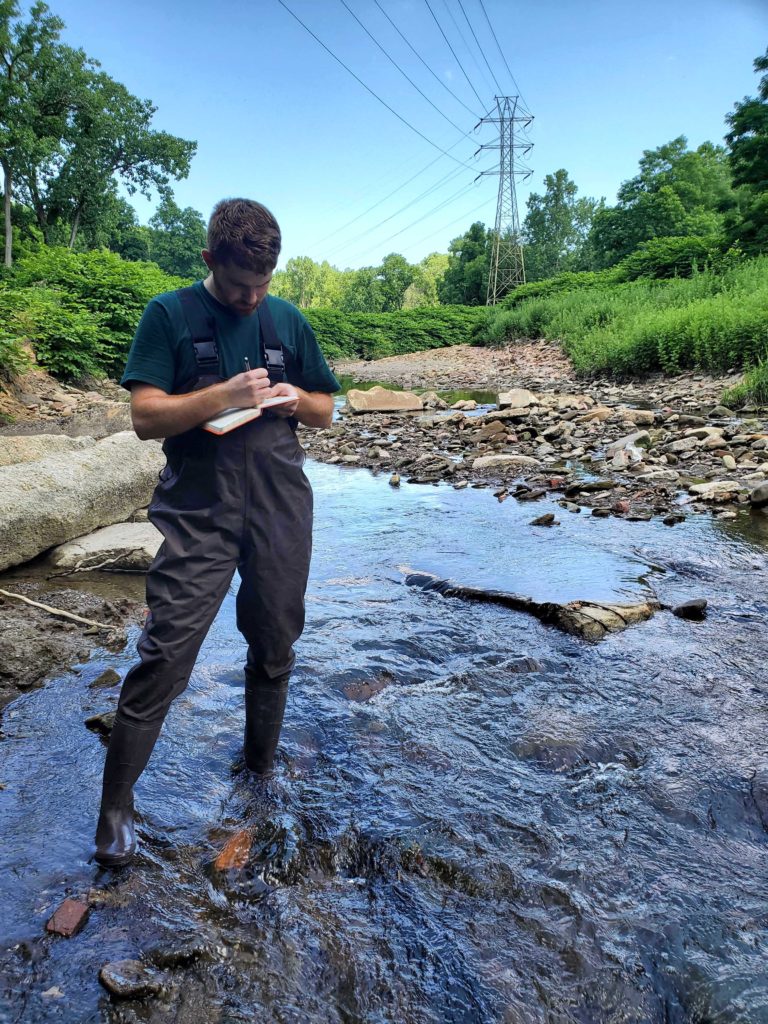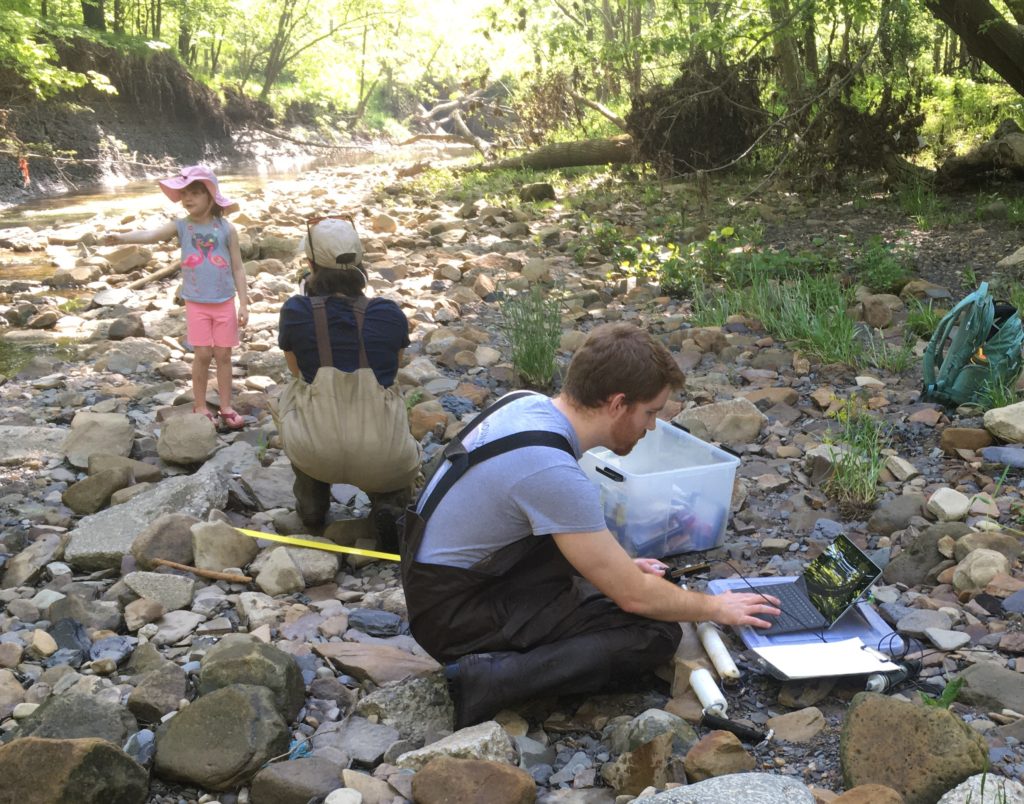The activities are as follows:
- Teacher Guide
- Student activity, Graph Type A, Level 4
- Student activity, Graph Type B, Level 4
- Student activity, Graph Type C, Level 4
- Grading Rubric
- Powerpoint of images
- Student Handout – Photosynthesis and Respiration
When imagining a stream, you may think of pristine water flowing through a forest or mountain valley. However, streams are found everywhere, including cities. Many of these urban streams run through a pipe, disappear underground, or are filled with water that doesn’t seem to be moving. These streams are often overlooked because they appear more like deep ditches or canals, but they play an important role in water management.
When rain falls in a forest, it flows through the soil, moving in the small spaces between soil particles. Eventually, it reaches a stream. This journey slows the water and prevents flooding. However, when rain falls in an urban area, it often does not move through soil before getting to a stream. Urban streams are instead surrounded by buildings, roads, and parking lots. Water races over these surfaces, causing rapid flooding. This water, called stormwater runoff, can cause a stream to go from ankle-deep to over your head in just a few hours!
A team of stream ecologists, including graduate student Andrew and his advisor Dave, wanted to see whether stormwater floods disturb urban stream ecosystems. Urban streams provide important habitat for many species – fish, insects, crustaceans, bacteria, and algae. Andrew and Dave have observed how large stormwater floods can sweep algae off rocks or bury algae with sediment that is washed in from parking lots. However, algae and other organisms in urban streams are used to living in a habitat with frequent disturbance and can cling to the rocks during small floods.
Andrew and Dave focused their research on algae because they are an important part of aquatic ecosystems. Algae use energy from sunlight and building blocks from carbon dioxide gas to create sugar and oxygen. This process is called photosynthesis. By photosynthesizing during the day and not at night, algae cause large changes in the amount of oxygen in stream water. Taking a closer look at these daily oxygen changes, you can see how well algae are doing and how healthy a stream is.
Andrew and Dave monitored daily changes in the stream by using sensors that collect oxygen concentrations every 10 minutes.
Andrew and Dave also needed to measure the intensity of flooding during different kinds of storms. They used a measure called discharge, which accounts for both the amount of water flowing in a stream and how fast it’s moving. During a rain event, the time when the most water at the highest speed is rushing through the stream is called the peak discharge. For this measure, Andrew and Dave had some help from the United States Geological Survey, which has instruments in streams and rivers all over the country measuring discharge all the time. Looking at this dataset, Andrew detected a total of 13 storm events of different sizes during a one-year study period.
When the peak discharge is very high, the fast-moving water and flooding disturb algae by sweeping them off rocks and other surfaces, sending them downstream with the flow of water, and the algae are unable to photosynthesize. To answer their question, they looked at the oxygen concentrations for the day leading up to and following the 13 storms that Andrew identified. The difference in oxygen produced by algae before and after storms is a simple way to look at whether the algae resist the flooding or are disturbed by the flooding. If the oxygen concentration is the same after the storm as it was before the storm, the algae were resistant. If oxygen is lower after the storm than before the storm, that means that the algae were disturbed. Andrew and Dave thought that intense storms with high discharge will disrupt the algae more, resulting in lower oxygen concentrations after a storm than before a storm.
Featured scientists: Andrew Blinn (he/him) and Dave Costello (he/him) from Kent State University
The research and data found in this activity come from the STORMS project, which investigates how stormwater management decisions influence hydrology and stream health in tributaries of the Cuyahoga River Watershed of Ohio.
Flesch–Kincaid Reading Grade Level = 10.3
Additional teacher resources related to this Data Nugget include:
- Check out the water data website to find the discharge data for streams. For more information about the USGS’s Stream gauge network access this fact sheet and the resources available that the USGS’s National Water Information System website.
- This 10-minute video features the scientists as they describe the STORMS project.


